Kunyu Mountain National Forest Park
Kunyu Mountain National Forest Park
Kunyushan National Forest Park is located in Mouping District, Yantai City, Shandong Province. It covers an area of 48 square kilometers and belongs to warm temperate monsoon climate and oceanic climate. The main peak of Taizuo Mountain is 923 meters above sea level. It is the first peak in Jiaodong Peninsula. It is a hundred miles round and has many peaks, deep valleys and ancient trees. There are many clear springs, waterfalls and cultural relics.
Kunyu Mountain National Forest Park is the birthplace of Quanzhen School of Taoism in China, the cradle of the Jiaodong Revolution, known as the "ancestor of the sea immortal mountain" reputation, "the sea immortal mountain belongs to Penglai, the ancestor of Penglai is Kunyun" said.
Kunyushan National Forest Park is a national 4A-level tourist scenic spot, National Nature reserve, national eco-tourism demonstration area, National Youth Science and technology education base, national agricultural tourism demonstration site, national industrial, agricultural and fishery tourism demonstration site, provincial scenic spot, provincial geological park, one of the ten best forest parks in Shandong Province, and one of the city-level cultural relics protection units.
Location context
Kunyu Mountain is located in the eastern end of Jiaodong Peninsula, across Yantai and Weihai of Shandong Province, and across the central and northern part of Jiaodong Peninsula with Aishan, Yashan and Daze Mountains. It forms a watershed of the north-south water system of Jiaodong Peninsula and is the birthplace of the four rivers, Muzhu River, Huanglei River, Han River and Qinshui River, in the eastern part of Jiaodong Peninsula.
Kunyu Mountain National Forest Park is located in 121 40 342 121 48 042 East longitude, 37 11 502 37 17 222 North latitude, 13 km east-west, 14 km north-south, with a total area of 71,000 mu, the main peak of Taizuo Peak is 923 meters above sea level, with a relative height difference of more than 800 meters, which is the highest peak in Jiaodong Peninsula. It borders Jieshi Town in Wendeng City in the east, Longquan Town in Mouping District in the north, Yulindian Township in Mouping District in the west, Jungezhuang Township in Mouping District in the south, Shengzi Town and Gejia Town in Wendeng City.
geographical environment
Geology and geomorphology
Kunyushan National Forest Park is located in the middle of Jiaobei Paleo-uplift in Jiaodong uplift area of North China Platform. The strata are Cenozoic Quaternary Alluvial-diluvial deposits of the second rock assemblage of the late Proterozoic Jiaodong Group. Kunyu Mountain belongs to Changbai Mountains, Laoshan Mountains, with more than 25 peaks over 500 meters above sea level, steep slopes, high peaks, vertical and horizontal ravines and magnificent momentum. Taizuo Peak, 923 meters above sea level, with a relative height difference of nearly 900 meters, forms the roof of Shandong Peninsula. The hills below 400 meters include Yanxia Mountain and Guyu Mountain, which constitute the high hills and vast mountain areas around Kunyu Mountain. The rocks are Cambrian old volcanic intrusive rocks, with granite being the most widely distributed and gneiss and quartz porphyry having a small amount of distribution. The main mountain ranges in the reserve strike east-west, forming branches and valleys in the north and south. The interlaced valleys cut Kunyu Mountain into several small landform types, providing a good natural environment for the distribution of biodiversity.
The soil type of Kunyu Mountain belongs to forest brown soil. Sandy soil is the main soil parent material, and granite is the main soil-forming material. Its structure is loose and its layers are not clear, and it is acidic or slightly acidic.
Climatic characteristics
The climate of Kunyu Mountain National Forest Park belongs to warm temperate monsoon continental climate. It is controlled by warm and humid air flow in the Pacific Ocean and dry and cold air flow in Siberia. It has four distinct seasons, mild climate, distinct monsoon, abundant rainfall, humid air, small temperature difference and abundant light. The annual average temperature is 11.9 C, the monthly average temperature is the highest in July, the lowest in January, the absolute maximum temperature is 37.2 C, and the absolute minimum temperature is - 14.7 C. The annual average precipitation is 984.4 mm, mainly concentrated in June to September, accounting for 72.6% of the year. The frost-free period of the year is about 200 days. The first frost period is in late October, the last frost period is in mid-April, the annual average relative humidity is 71%, and the annual average sunshine hours are 2642.7 hours.
Resource situation
plant resources
As of November 2011, there are 161 families, 536 genera, 1073 species (including varieties and variants) of wild higher plants and 884 species of vascular plants belonging to 427 genera and 115 families in Kunyu Mountain National Forest Park. Vascular plant families, genera and species accounted for 62.8%, 47.7% and 38.1% of the total number of Shandong Province, respectively. Wild seed plant families, genera and species accounted for 80.1%, 67.6% and 56.5% of the total number of seed plants in Shandong Province, which was one of the areas with the richest plant species in Shandong Province. Among the recorded wild plant species, there are 7 national grade I and II protected plants, namely: Ginkgo biloba, Juglans mandshurica, Zoysia sinensis, wild soybean, Fraxinus mandshurica, Berberis, Tilia amurensis, and one national grade II protected fungus, Tricholoma matsutake, which are listed in the Convention on International Trade in Endangered Species of Wild Fauna and Flora. There are 8 genera of Orchidaceae plants, totally 10 species. There are 46 species of rare and endangered plants in Shandong Province. There are 22 endemic plants in Shandong, of which 13 are endemic to Kunyu Mountain. There are 8 species of plant type specimens, which are: Jiaodong birch, Jiaodong birch, Hongguoshan pepper, Jiaodong Jingtian, Shandong shearing glume, Kunrong mountain shearing glume, Quercus obtusifolia, Quercus tataricus.
Kunyu Mountain National Forest Park is the most abundant gene pool of plant resources in Shandong Province because of its diverse plant species and complex floristic composition.
Animal resources
Kunyushan National Forest Park belongs to the Palaearctic Zone in the terrestrial fauna. The terrestrial wildlife is mainly Palaearctic, and also contains Oriental elements. In the zoogeographic division of China, it belongs to Shandong hilly province of North China and Huanghuai sub-region. Animal community belongs to forest-forest grassland and farmland fauna in warm temperate zone. It belongs to the hilly area of Jiaodong in the geographic division of terrestrial vertebrates in Shandong Province.
As of February 2012, 10 classes, 47 orders, 225 families and 1161 species of wildlife were recorded in Kunyu Mountain National Forest Park.
In Kunyu Mountain National Forest Park, 9 species of wildlife under national protection at level I, 40 species of wildlife under national protection at level II, 54 species of key protected animals in Shandong Province, and 1 species of insect type specimens were recorded and listed in 35 species of the Convention on International Trade in Endangered Species of Wild Fauna and Flora. The only venomous snake in Shandong Province, Agkistrodon halys, is widely distributed in the region.
Water resources
The stable forest ecosystem of Kunyu Mountain National Forest Park has bred a stable water system. The geomorphological characteristics of the "peninsula ridge" near the east-west direction of Kunyu Mountain constitute the watershed of the North-South water system. Four larger rivers originated from this area. The Han and Qinshui rivers flowed northward and the Muzhu and Huanglei rivers flowed southward into the Yellow Sea. The large surface water bodies around Kunyushan National Forest Park are Mishan Reservoir, Longquan Reservoir, Kunyushan Reservoir, Dongfeng Reservoir and Washan Reservoir, which are important production and living water resources for the surrounding residents. The groundwater of Kunyushan National Forest Park is pore water of loose rock and fissure water of bedrock. It belongs to mineral water of metasilicate calcium bicarbonate type.
Main attractions
Kowloon pond
There are nine natural stone pools on the 100-meter cliff. In rainy season, the wind is turbulent and drifting for thousands of miles, just like the silver dragon tail swinging northeast, the waist bends toward the south, showing the tendency of dragon mountainous, innate, wonderful and dangerous, known as "Longchi snowblasting". Legend has it that the Dragon King of the East China Sea was born with nine sons. Because of his willful and playful childhood, he violated the rules of heaven and ran into a catastrophe. The Jade Emperor demoted him to think about it. Kowloon was demoted, the world has been drought for decades, people kneel for rain year after year, the Jade Emperor, considering the suffering of the people, sent an Antarctic Centaur on June 30 of the lunar calendar to announce the release of Kowloon, immediately fell auspicious clouds, the world was full of rain. To commemorate this day, the local people have designated June 30 of the lunar calendar as the Kowloon Temple Fair, which has been handed down to the present day. Zhao Ziyuan, a poet of the Qing Dynasty, once wrote that "madness is difficult to tame and roar, and the walls of jade caskets are broken and flowing... fighting fiercely, and the rage is boiling like squid caves". People in the world think that there are dragons living in Yan. Main attractions: Kowloon Temple, Viewing Pavilion, Water Paradise, Longchi Snow Spray Pavilion, Kowloon Pavilion, Hulufeng, Longwang Pavilion, Ancient Papaya, Xianwengshi, etc.
Thailand's top
Taizhengding, Jiaodong Roof, 923 meters above sea level, the peak is tall, lofty, magnificent, magnificent and steep. According to legend, the name of the top of Tai Zongding means that it takes the branch of Mount Tai and has great momentum. Climbing to the top of the pole, overlooking the vast sea on three sides, the peaks of the peninsula are verdant, and Kun Rong's beautiful scenery is in full view, forming a sense of rhythm from restraint to Yang and a high and broad momentum of "a panoramic view of small mountains". If encounter clouds and mists, the Kunyun Sea is more spectacular. The white clouds in the mountains rise gloriously, curling clouds, towering Yunshan and Qianzhu Cuifeng Peak are suspended on the long and smooth white clouds, just like the empty Xianshan Qiongge Pavilion. It can also see the Yellow Sea, sunrise, mountain and other landscapes.
The main attractions are: Lotus Pool, Rhododendron Slope, Eco-Museum, Water Curtain Cave, Natural Oxygen Bar, Cabin, Shanzhen Restaurant, Qilu First Eco-Fitness Avenue, etc. In the water curtain cave, a clear spring gushes from the cracks of the rocks, surges up the abrupt rocks, and pours into the pool along the boulders. Trickle trickle, or gather or scatter, sometimes like a Pearl curtain, drifting with the wind, water curtain in the sunshine mapping, bright and dark, shining rainbow, there is a pool below, water surface up to 2000 square meters, green mountains and clear waters, stone pool hanging, all year round beautiful scenery. Natural oxygen bar has fresh air and high negative ion content, which makes people breathe smoothly, lowers blood pressure, promotes metabolism and improves immunity. It has special effects on treating heart disease, coronary heart disease and stabilizing spirit. It is the best place for health and fitness. Especially in summer, the temperature of oxygen bar area is about 6 degrees lower than that of other places, so it is called "natural air conditioning".
No dye Temple
Wudyn Temple is located at the south foot of Taizuoding, the main peak. It is the first ancient temple in Jiaodong, which was built during the Yongkang reign of Emperor Huan in the Eastern Han Dynasty. According to the Records of Ninghai Prefecture, a temple was built as early as the Warring States Period. The name "Wudyeing Courtyard" means "six of the people who live in it are clean, and the dirt can be removed greatly".
After the completion of Wudyn Temple, a few piloses were repaired and the palace was magnificent and magnificent. The Tang Dynasty's Wu Dye Temple Stele records: "Pine Man Sen, the cliff Valley is mysterious, the waves of the great river are stirring up the sea, the roof of the courtyard is extremely steep and dangerous, the courtyard is"Wu Dye", the courtyard is loosely hung between the four corners, Zhang Fengfei is flying with Han; the palace has a base of beams and rafters, and builds dragon scales. The monk prolongs winter and summer, is actually the way to maintain the Tao, the frontal Qing Festival, the trend of Yongqing Peak. It can be seen that the macroscopical success of that year, now the temple has collapsed, only the remains of the temple. However, tourists to Kunyu Mountain always have to scramble to visit the old site of Wudye Temple. There are dense forests, green pines and cypresses, mountains and peaks, rocks, winding valleys, streams, waterfalls and springs in a clear water, rippling waves, splashing water, so that visitors forget to return. In this scenic spot, you can see ancient Ginkgo biloba, Magnolia, King Qi's Tomb, Salt-free Queen's Tomb, Queen Mother's foot wash basin, stone windows and so on.
Legend has it that there were ancient stone niches in the temple with holes under them, and the tomb of the "salt-free queen" in the Warring States Period. There is a tomb of King Qi in the northeast of the temple. According to legend, Qi Kang Gong was banished from Donghai Island by the Tian family. After his death, he was buried there. On the tomb, there is also an old pine standing proudly.
Rosy Cloud Cave
Yanxia Cave Scenic Area is situated in the north corner of Kunyu Shanxi Province, which is naturally made of abrupt rocks. The cave is oval in shape, 7 meters deep and 3 meters high. The cave wall is inscribed with three big characters of "Yanxia Cave". Inside the cave is a statue of "Seven True Man". Outside the cave, surrounded by peaks, valleys, fir trees, dangerous rocks stand, stone paths are winding, winding, beautiful and spectacular. Whenever the weather is cloudy, the mountains are covered with white clouds, green drops, the sea of clouds is like waves, smoke is shrouded, and sometimes there are sunshine, bright or dark, just like hazy clouds, the scenery is wonderful. Ancient poetry cloud "blue sky overlapping water ripples, smell that there is another day here. Where are the immortals going in the cave? The smoky scenery is from year to year. This cave is secluded, quiet and quiet, backed by mountains and rivers, and has always been a place for Taoists to devote themselves to practice and elucidate. In the seventh year of Jin Dading (1167), Wang Chongyang, a Taoist priest in Xianyang, traveled eastward from Nanshan Mountain, preached in Yanxia Cave, and gathered seven disciples, such as Qizhenren in the hill. With this as the center, he preached in Ninghai (Mouping), Wendeng and Laizhou, and founded a new sect of Taoism, Quanzhen Sect. Yanxia Cave became the "heaven and earth" of the founding sect. Qi Chuji is the most famous of the "Seven True Persons". He was honored as "immortal" by Genghis Khan, the grandfather of the Yuan Dynasty. He became a master of Taoism in the whole country and made Quanzhen religion prevail throughout the country. Yanxia Cave, the ancestral court of Quanzhen religion, has an important position in Chinese history and is the sacred place of Taoism in China. Nowadays, the stone statues, bronze tablets, imperial edict tablets, Danjing and Qizhen tombs in Jinyong Wudao TV series "Heroes of Shooting and Carving" are well protected.
Yue Gu Dian
Yue Gu Dian was originally Magu Dian, which is said to be the place where Jianchang Magu practiced. Ma Gu is a goddess in Ge Hong's Immortal Biography of the Eastern Jin Dynasty. The book says that when Emperor Huan of the Eastern Han Dynasty was called by Wang Fangping, Ma Gu came to visit Cai Jing's family. Cai Jing saw that she was very beautiful. She was only eighteen or nineteen years old and could throw rice into pearls. She recounts that she has seen the vicissitudes of the sea three times, which shows that she is hundreds of millions of years old. She said that when she came here, she saw that the water in Penglai was shallower than in the old days. She also said, "March 3 is the birthday of the Queen Mother, Ma Gu is on the Bank of the Jiangzhu River, making wine with Ganoderma lucidum to celebrate the birthday of the Queen Mother." In the Tang Dynasty, Yan Zhenqing, a great calligrapher, set up a monument for his biography. During the Five Dynasties, there were miracles such as Magu Tomb in Kunyu Mountain. In the Six Years of the Northern Song Dynasty (1116), Emperor Huizong ordered Magu to be "a real man in vain" and set up a monument. Since then, Ma Nu has been highly worshipped by the local people and used her as a symbol of longevity, fitness, intelligence, integrity and purity. After Magu attained Tao and became immortal, Jin Dading, Bixia Yuanjun, the daughter of Dongyue earth, the God of Mount Tai, moved in from Mount Tai because of its immortal spirit when he visited Kunyu Mountain in the east. Then we built 72 temples such as Yuegu Hall and 108 temples. Existing sites and stele forest were chiseled. Magu Temple, Sanguan Hall, Caishen Hall and Yueliao Temple were newly restored. There are also scenic spots such as Magu Tomb, Kunyun Diecui, Huaquan, Bixia Pavilion, Yuegu Hall and so on.
Tourism information
Scenic spot ticket price
Kunlun Mountain Scenic Area Line (4)
Forty yuan per person in Taizhengding Scenic Area,
The Kowloon Pool Scenic Spot is 40 yuan per person.
Fifty-five yuan per person,
The Yanxia Cave Scenic Area is 30 yuan per person.
Yue Gu Dian Scenic Spot is 10 yuan per person.
Older persons over 60 years old, disabled persons, active and retired servicemen and disabled servicemen are exempted from valid certificates; children under 6 years old (including 6 years old) or under 1.2 meters in height are exempted from tickets; children under 1.2-1.5 meters in height are half-tickets; minors between 6 years old (excluding 6 years old) and 18 years old (including 18 years old) hold valid certificates and half-tickets; students with full-time undergraduate degree and below hold student certificates. Half price ticket.
Transport line
Self-driving tour route
1. Weihai to Kunyu Mountain
Line 1: Exit of Yanwei High Speed Tavern Shangzhuang Kunyu Mountain
Line 2: Weihai Wendeng Wang Tuan Jieshi Li Gezhuang direction can be seen Kunyu Mountain signs.
2. Jinan, Weifang, Dongying to Kunyu Mountain
Laishan Exit of Rongwu Expressway Mouping (12 kilometers south of Tonghai Road - Dongguan Road, one-way overpass eastbound) Kunyu Mountain.
3. Qingdao to Kunyu Mountain
Rushan exit of Qingwei Expressway Shuiduo Town Yulindian Town northbound 1 km and overpass eastbound 9 km.
Bus routes
1. Yantai Youth Road Bus Station, 61, 62 Muping Bus Station
2. North Bus of Kunyu Mountain Tour "1" Special Line:
The route is 74.8 kilometers one way, the fare is 15 yuan, and the running time is about 90 minutes. There are 11 stations such as North Square of Railway Station, Moon Bay, Huanghai Recreation City, East Gate of Yantai University, International Expo Center, Yantai Vocational College, Yangma Island Bridge, College of Traditional Chinese Medicine, Longquan, Kunyushan National Forest Park and Jiulongchi Scenic Area, with 4 shifts per day.
The departure time of the North Plaza of the Railway Station is 7:00, 8:00, 13:00 and 17:30.
The departure time of Kowloon Pool Scenic Area is 6:00, 11:00, 15:30 and 16:30.
3. Kunyu Mountain Tour "1" Special Line South Bus:
The bus journey is 77.5 kilometers, with 8 stations and 95 minutes of one-way running time. It starts from the North Plaza of the railway station. It runs through Moon Bay, Huanghai Recreation City (Business College), East Gate of Yantai University, International Expo Center, Yantai Vocational College (West Gate) and West Station of Muping Bus Company. The terminal is the scenic spot of Wudye Temple.
A round trip every day, travel holiday overtime departure.
The departure time of the North Plaza of the Railway Station is 7:40.
The departure time of Wudynasty Temple is 14:30.
History and Humanities
Kunyu Mountain is not only a famous Taoist mountain, a famous cultural mountain, a famous historical mountain, but also a revolutionary cradle of Jiaodong.
After Qin Shihuang unified China, he visited Kunyu Mountain, the sacred place of Xianshan Mountain, three times to seek the medicine of immortality; Emperor Wudi of Han Dynasty was once sealed up as King of Jiaodong, whose territory is Kunyu Mountain area of the present Jiaodong Peninsula, so he visited Kunyu Mountain to pray for immortals many times after taking office; in the late Northern Song Dynasty, in order to save the political situation of internal and external difficulties, Emperor Huizong of Song paid tribute to immortals everywhere and blindly appealed to Heaven for help. At that time, the "Magu Daxian" in Kunyu Mountain was very famous. Huizong immediately issued an edict to seal Magu as a "fabulous real person" and set up a monument in Kunyu Mountain. Magu immediately became a Taoist immortal respected by the whole world; and Jin Yuan, Wang Chongyang Yun, a famous scholar in Xianyang, Shaanxi Province, visited this place and found that it was a place of affection for immortals to preach Taoism, and established the Quanzhen School of Taoism. Mountain became a famous Taoist mountain in China.

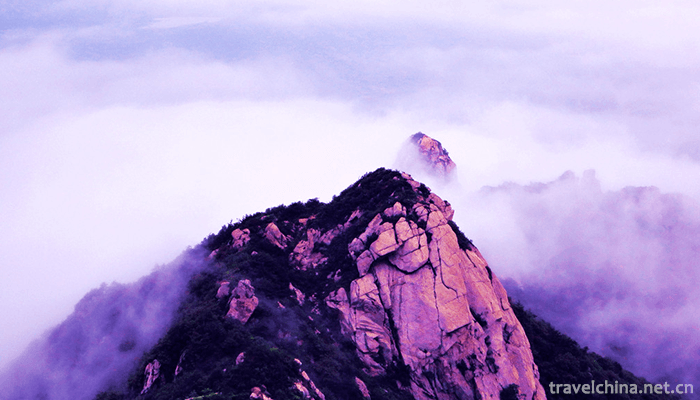

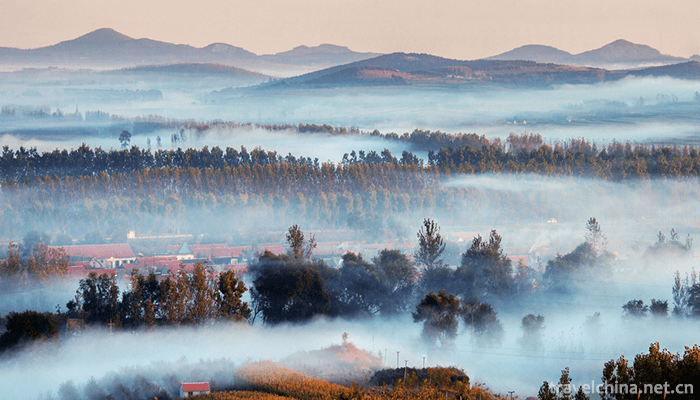
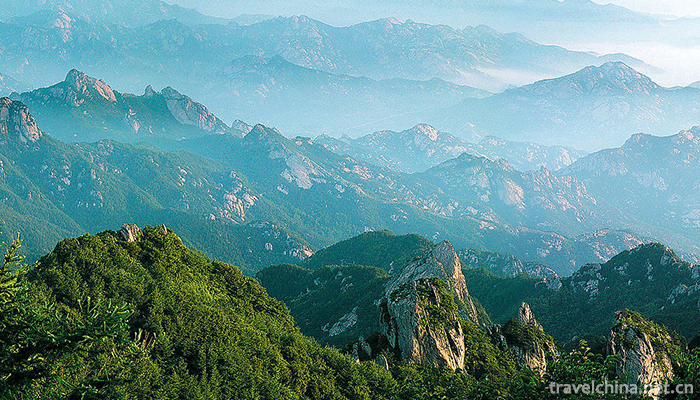

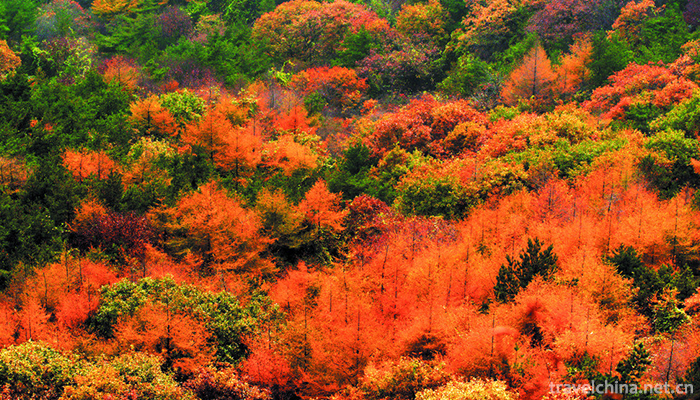
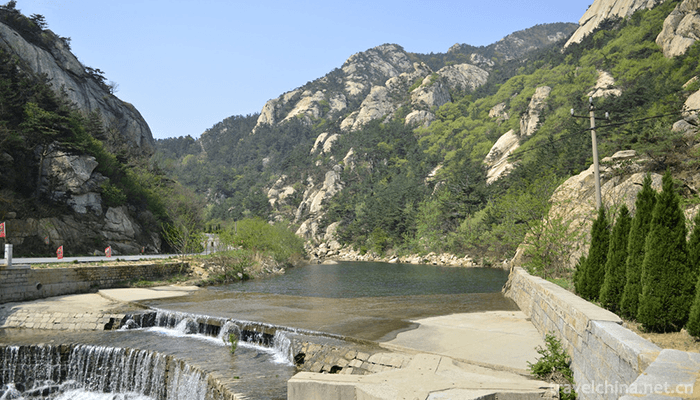
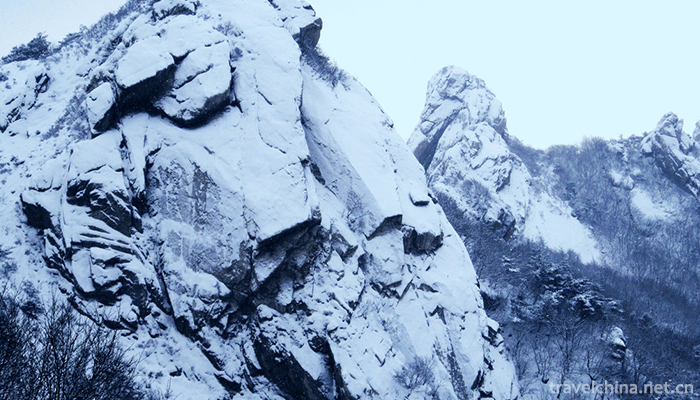

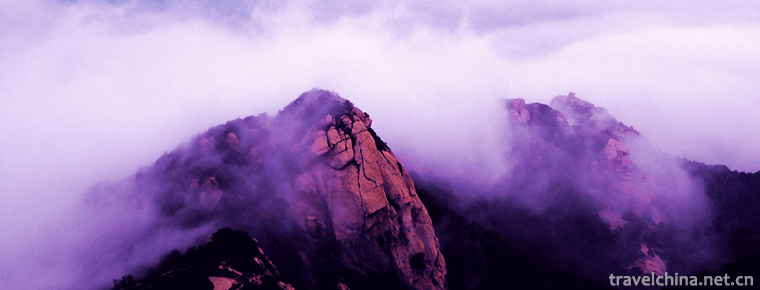
-
1.Wanxiang Karst Cave
Vientiane Cave, the national AAAA-level tourist attractions, provincial geological parks, provincial scenic spots and provincial cultural relics protection units
Time 2018-12-17 -
2.Rushan Yintan Tourist Resort
Yintan Tourist Resort is located on the southeast coast of Rushan City, Weihai, Shandong Province. It connects Weihai to the east, Yantai to the north, Qingdao to the West and Huanghai to the south
Time 2018-12-22 -
3.Guyi Garden
Guyi Garden is located in Nanxiang Town, Jiading District, northwest suburb of Shanghai. It was built in Jiajing period of Ming Dynasty. Its original name is "Yiyuan". It was taken from the
Time 2019-01-12 -
4.International Jade City
International Yucheng is located in the south of Shifosi Town, Zhenping County, Henan Province, on the south side of Yuyuan Avenue, south to Liulu Highway, east to Erlong Road, north to Longxiang Road
Time 2019-01-13 -
5.Hill hinge
Originated in Xixing and Longgang of Pingchang County, northeastern Sichuan Province, it is a traditional folk dance that spreads in Dazhou, Bazhong and some counties (cities and districts) under the
Time 2019-04-29 -
6.The Firing Techniques of Jun Porcelain
Jun porcelain firing technology, Yuzhou City, Henan Province, traditional handicraft, one of the national intangible cultural heritage.
Time 2019-05-08 -
7.Glass Firing Techniques
Glass firing technology, Beijing Mentougou District, Shanxi Province, local traditional handicraft, one of the national intangible cultural heritage.
Time 2019-05-14 -
8.Legend of Luban
productivity and the change of production tools have created conditions for the improvement of technology.
Time 2019-05-15 -
9.Nadam
Nadamu is Mongolian, also known as Nair. Nadamu is a Mongolian transliteration, meaning "entertainment, games" to express the joy of harvest. The Nadamu Congress is a traditional festival wi
Time 2019-06-06 -
10.Netboat Club
Netboat Club is an ancient traditional folk custom and folk religious and cultural activities. During the period of the Republic of China, around the Qingming Festival and the Mid-Autumn Festival, ten
Time 2019-06-26 -
11.Legend of Xu Fudong Du
Xufu Dongdu legend is one of the local folklores in Cixi City, Zhejiang Province and Xiangshan County. It originated from the story that Qin Shihuang sought immortality and Xu Fu sought immortality bu
Time 2019-07-08 -
12.Smelting and Casting Techniques of Pig Iron in Yangcheng
Yangcheng pig iron casting technology was invented in the 6th century BC. Yangcheng pig iron smelting and casting technology in the smelting and casting process first crushed the ore, then roasted at
Time 2019-07-10